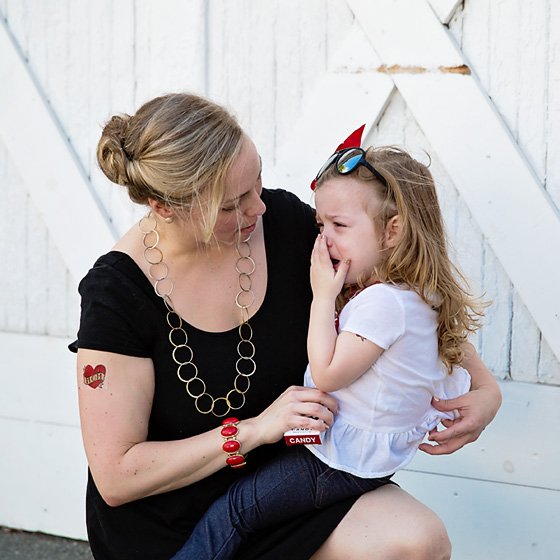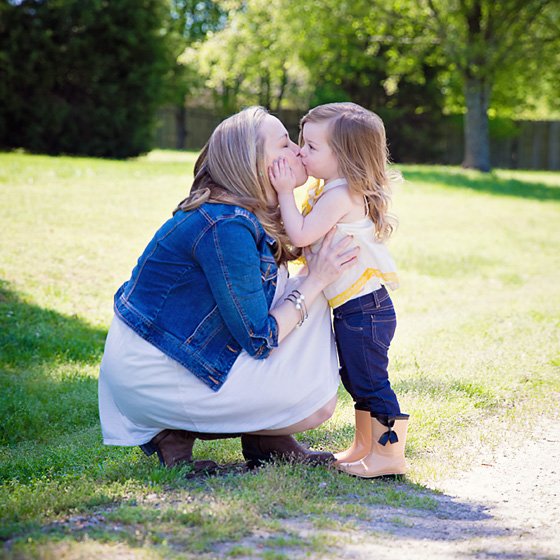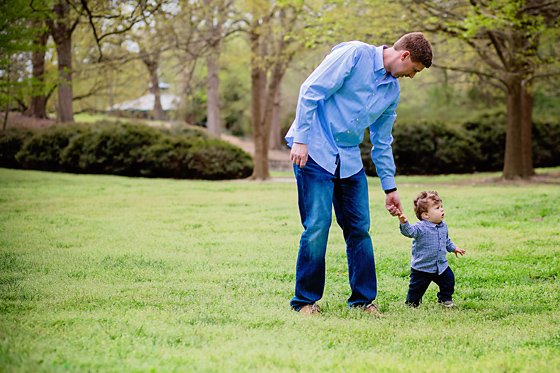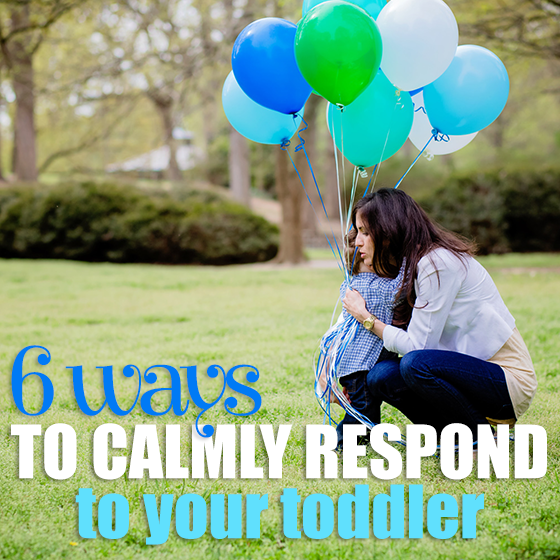Toddlers regularly experience big emotions. In some cases, it’s the excitement of realizing something for the first time and they want our full attention. In other cases, it’s the result of feeling hungry, tired, overwhelmed or overstimulated and unable to express their anger, frustration or upset feelings in words. We commonly refer to the later as tantrums that should be minimized or eliminated as quickly as possible.
Either way, much of modern parenting advice tells us that our children should learn to self-soothe. That we should ignore these episodes or use time outs, and that if we are constantly responding to our toddler’s cries for attention, that they will never learn independence.
However, we’d like to offer six ways to calmly respond to your toddler as a way to reconnect with your little one, meet their needs and help them learn self-regulation skills.
1. Be There
It’s been our experience that a toddler’s volume button is directly correlated to how closely you’re paying attention. When you’re not paying attention, they will do anything and everything to reel you back in. This usually results in a lot of whining, which left untreated can quickly turn into a tantrum.
It can be tempting to simply yell at your child to stop whining. However, this typically does not treat the underlying issue.

Instead, stay close to and support your child during their tantrum. It doesn’t mean that you have to stay within arm’s reach 24/7, but it may mean that you have to drop what you’re doing and walk over to your child. This will show your child that they have your love and support to feel these big emotions.
Alternatively, you can walk your child into another room to change the scenery. This is especially useful if the tantrum occurs in public.
These moments aren’t easy, but if you can remain calm, kind and compassionate during the tough times, these tantrums will become less severe or even nonexistent.
2. Make Eye Contact
Whether or not your child is in full tantrum mode, if they are seeking your attention, we find that one of the calmest ways to meet their needs is to drop to their level and look into their eyes while you talk to them.By establishing a little non-threatening face-to-face contact, your child will be able to see that you are genuinely concerned.
3. Offer a Hug
Touch is one of the greatest tools we have, as parents. Often, a simple hug or handhold (as we’ve often used while driving) can calm a child in a matter of minutes.
However, too often we read of parents who use the gift of touch to spank children for misbehaving. We’ve even heard of parents threatening to spank a child for “whining.” Again, we feel that while this may be a natural response for some parents, that it simply doesn’t address the root of the problem. In most cases, kids will simply avoid the punishment rather than just adopting positive behaviors. Furthermore, we find that the use of touch in a negative context will perpetuate itself further. Kids who are hit, will hit other kids (as well as their parents) because they are taught that hitting is the appropriate response to negative feelings.

On the other hand, by using touch in a positive manner we can help children learn that even while we are upset or angry, our hands can be used in a positive way. A way that makes us feel better, rather than to harm others.
If your child prefers not to be touched, no worries. Stay close to demonstrate your support.
4. Use Calming Language
While maintaining eye contact, speak calmly to your child.
If they simply want your attention, you can say something to the effect of, “Mommy is busy right now, but I can hear that you really want me to play with you. Is that correct? (child will respond yes or nod) How about I finish what I am doing and play with you in 5 or 10 minutes?”
Toddler attention spans are relatively short, so if you can fulfill your end of the bargain and play with your child in the agreed upon time frame, then they will understand when you need to go back to work. Not that they won’t want you to play again a bit later, but we find that the dialogue is preferred over continuous whining.
Now, if your young child has reached the point of a full tantrum, your approach will be similar but will use fewer negotiating words. Use gentle and calming phrases such as “I love you,” or “Mommy is here with you,” or “I know you’re upset. Is there anything Mommy can do for you?”
Once they allow themselves to listen, they will be more apt to abandon their feelings of discontent in exchange for a hug before moving onto their next activity. We also find that the use of calming language is a great way to teach children how to cope without your assistance. You may even find that if they see that you are upset, that they respond to you in much the same manner. Our children have been known to come over, give a hug and say, “It’s okay Mommy. I’m here.”
5. Ask Questions and Listen
Toddlers often can’t put exactly what they are feeling into words, so they rely on us to help sort it out. We find that the best way to help your child work through their frustration is to ask simple questions, listen to your child’s response and then repeat back to your child what you heard them say. It often sounds something like this:
You: What happened?
Child: I dropped my ticket (the tag from their new toy or shirt that they’ve been toting around the house since you returned from the store).
You: Okay, you dropped your ticket. And that made you mad?
Child: Yes. I can’t find it. Find it.
You: Okay, let’s look together. Would that be okay?
Child: Yes. (and off you go to look for said ticket)
You may also find that in the process of asking questions, that the entire situation could have been resolved quickly by addressing two biological needs. In fact, we often ask our children if they are hungry or tired when they start acting out. Typically, just look at the clock. If the outburst is around a meal or snacktime, then feed the kid! We guarantee that whatever was causing the tantrum will no longer be an issue. Same thing with sleep. Sleepy toddlers almost always act out.
Once you understand where their frustration is coming from, you’ll be able to better address the situation.
6. Create a Plan

Believe it or not, most children are open to the idea of creating a plan for future episodes once you take the time to reconnect with them through touch, eye contact, and simple conversation. Now, don’t get ahead of yourself. Keep the plan simple. For example, “The next time you need help finding something, just say help me Mommy, okay?” Then have your child repeat back to you some variation of the plan.
Give another hug and a kiss, with an “I Love You” and you should be all set.
Toddler tantrums aren’t for the faint of heart but these moments in your child’s life will define how they treat others and how they learn to tackle obstacles in the future, so make the best of them. Also remember, this is just a season. How you choose to live in that season is entirely up to you. For us, we prefer a calming approach.
Photo Credit: Ashley Sisk











































